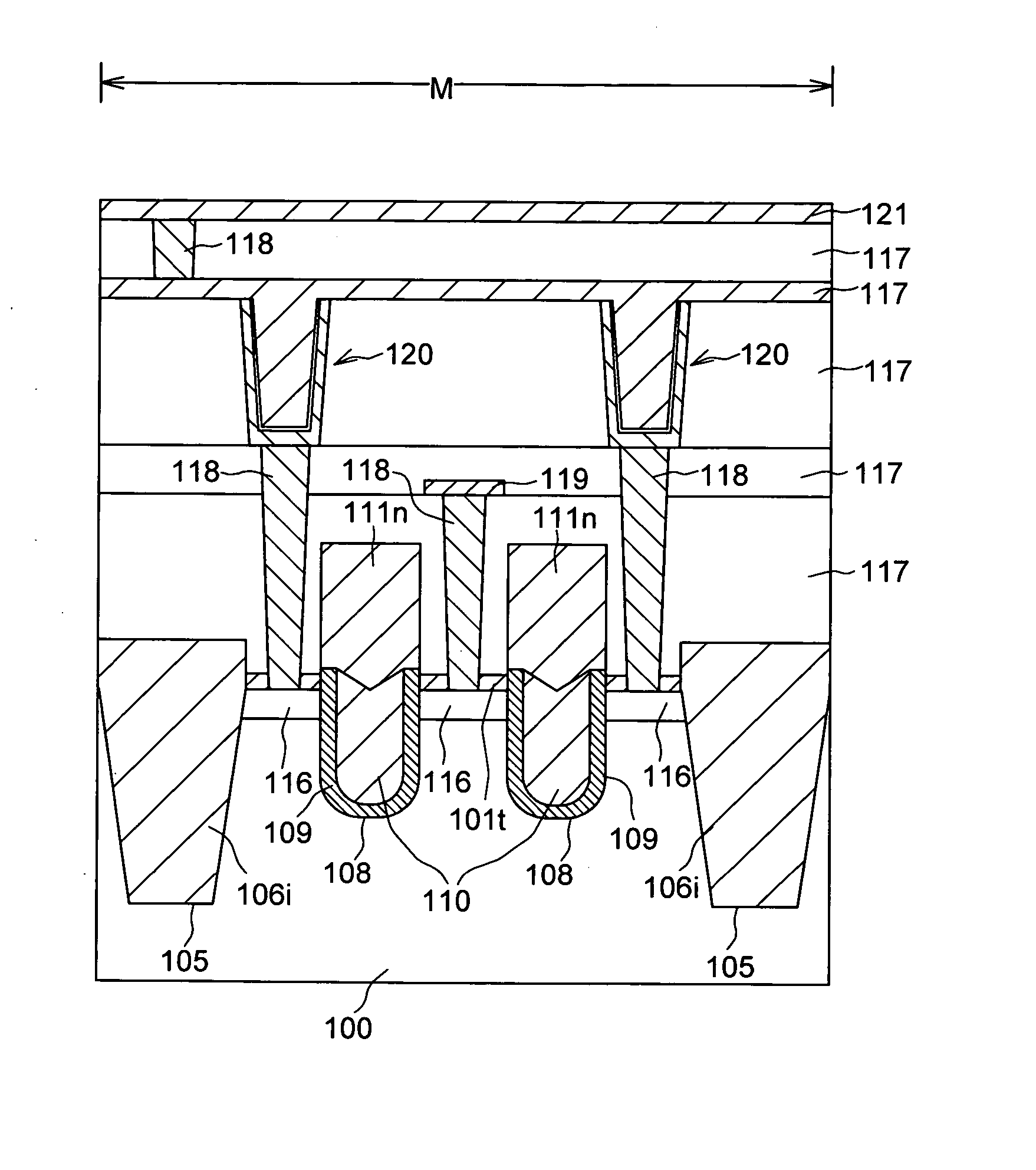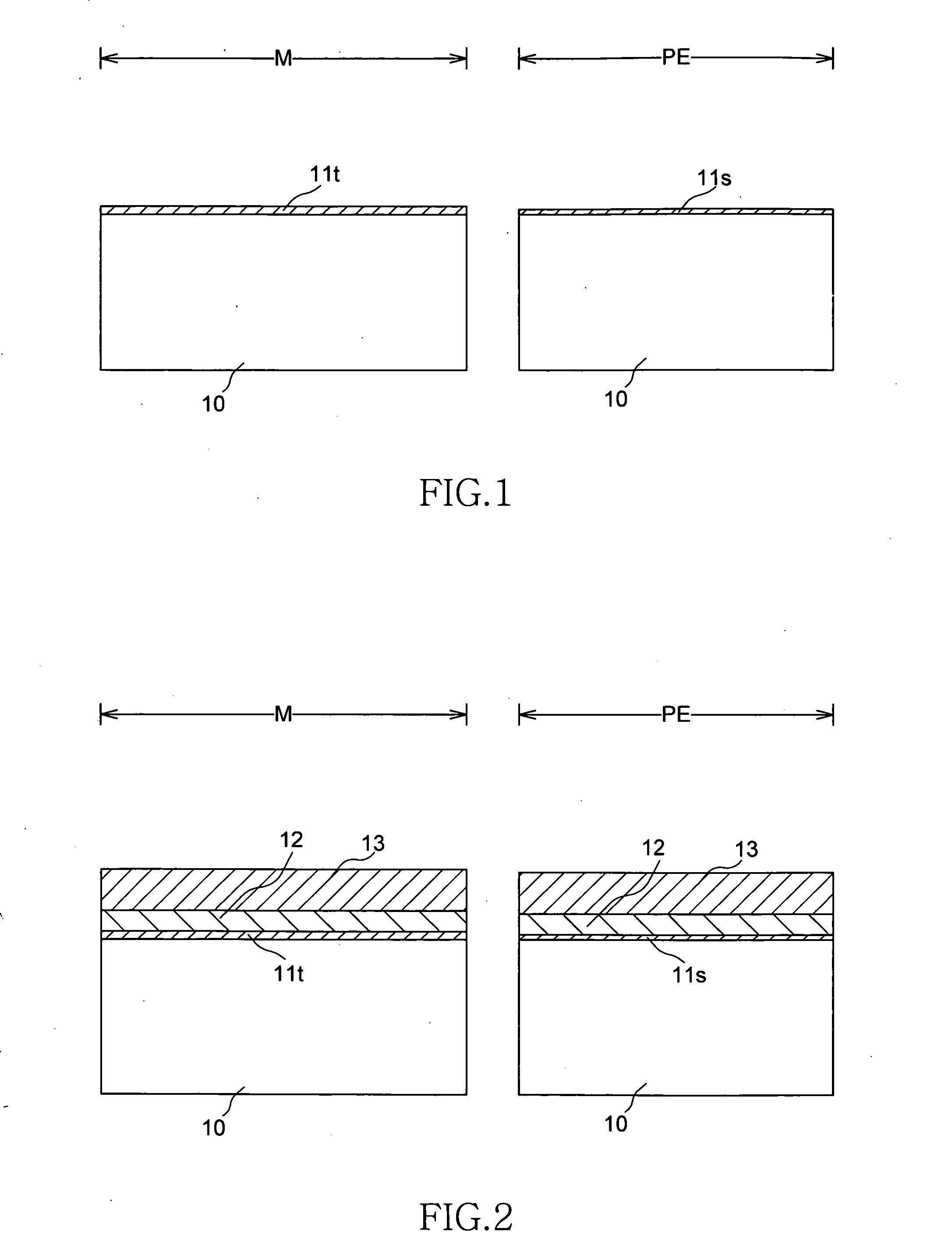Method for manufacturing semiconductor device
- Summary
- Abstract
- Description
- Claims
- Application Information
AI Technical Summary
Benefits of technology
Problems solved by technology
Method used
Image
Examples
first embodiment
[0067]FIGS. 1 through 18 are schematic views showing the process for manufacturing a semiconductor device that has a trench-gate transistor and a planar transistor according to a first embodiment of the present invention. In FIGS. 1 through 18, “region M” indicates the memory cell region in which the trench-gate transistor is formed, and “region PE” indicates the peripheral circuit region in which the planar transistor is formed.
[0068] First, a thin oxide film 11s having a thickness of approximately 1.5 to 3 nm is formed on the surface of region PE of a semiconductor substrate 10, as shown in FIG. 1. A thick oxide film 11t having a thickness of approximately 4.5 to 6 nm is also formed in region M and in a region (not shown) in which a power supply circuit and the like are formed, and which is a region other than region PE of the peripheral circuit region. In a specific example, a thermal oxide film having a thickness of slightly less than 6 nm is formed on the entire surface of the...
second embodiment
[0092] As a second embodiment, an example will next be described in which the present invention is applied when a trench-gate transistor having a thick oxide film as the gate insulating film is formed in the memory cell region in the same manner as in the first embodiment, and a dual-gate-structured transistor having a thin oxide film as the gate insulating film is formed in the peripheral circuit region. In a dual-gate structure, a gate electrode that includes N-type polycrystalline silicon into which an N-type impurity (phosphorus or the like) is introduced is used as the gate electrode of an N-channel transistor, and a gate electrode that includes P-type polycrystalline silicon into which a P-type impurity (boron or the like) is introduced is used in a P-channel transistor.
[0093]FIGS. 19 through 38 are schematic views showing the process for manufacturing a semiconductor device that has a trench-gate transistor and a dual-gate-structured transistor according to a second embodime...
PUM
 Login to View More
Login to View More Abstract
Description
Claims
Application Information
 Login to View More
Login to View More - R&D
- Intellectual Property
- Life Sciences
- Materials
- Tech Scout
- Unparalleled Data Quality
- Higher Quality Content
- 60% Fewer Hallucinations
Browse by: Latest US Patents, China's latest patents, Technical Efficacy Thesaurus, Application Domain, Technology Topic, Popular Technical Reports.
© 2025 PatSnap. All rights reserved.Legal|Privacy policy|Modern Slavery Act Transparency Statement|Sitemap|About US| Contact US: help@patsnap.com



